Introduction to Kalighat Paintings: A Unique Form of Ancient Indian Art
Kalighat painting is a traditional Indian art form that is well known for it’s east Indian style of themes and techniques. It originated around 19th century in the Kalighat Temple area of Kolkata. The Kalighat art form has left behind a huge legacy. The expertise in the Kalighat painting art form, it’s striking outlines, vibrant colors, and expressive depiction have defined it’s richness.
What is Kalighat painting famous for?
Kalighat Painting got the inspiration from the “Pattachitra”. Pattachitra is an ancient Indian art form well renowned in the subcontinent region, you can read here for more info about it. The Pattachitra artists were scroll painters who created portable images used as storytelling tools. These paintings were crafted on cloth or patas and it depicted stories from ancient scriptures and religious texts. The artists would travel to different towns and narrate stories with the help of these paintings as depiction.
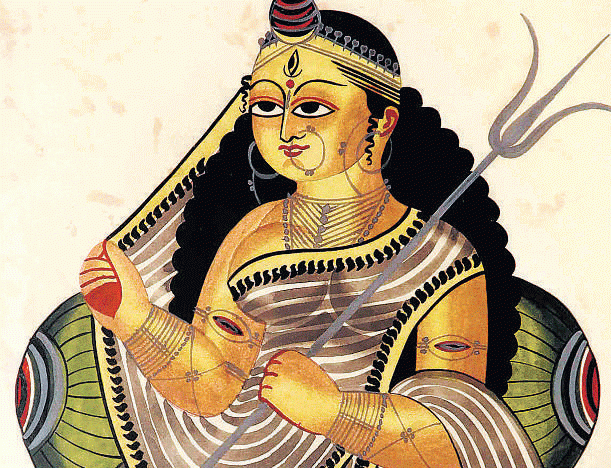
Kalighat paintings depicted social issues like the hypocrisy in society, corruption, and social issues of the time. The artists painted popular figures, local lifestyles. They also portrayed British colonial officers with a humorous and often critical perspective and it gave the art form a distinctive voice. It depicted secular themes and those associated with the ongoing freedom struggle.
Initially, Kalighat paintings focused on Hindu deities, scenes from epics like the Ramayana, Mahabharata and legends from local folk tales. These paintings were simplified, accessible and easy for the public to understand. It helped to bridge the gap between religious art and folk traditions.
Who is the founder of Kalighat?
The origin of Kalighat painting can be dated to the early 19th century around the 1830s to 1860s. Kalighat paintings emerged as a collective art form developed by local artists in the Kalighat area of Kolkata (Calcutta) in the state of West Bengal. These artists were known as patuas or chitrakars and they migrated to the city from areas like Bankura and Midnapore.
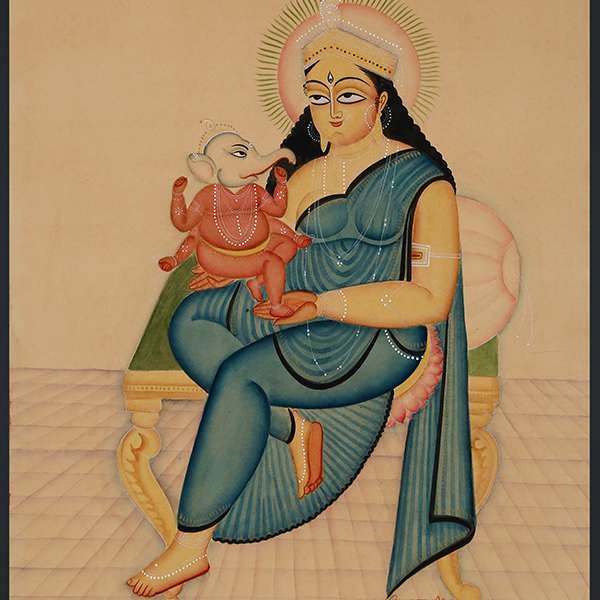
These artists adapted their style to appeal the urban audience and pilgrims visiting the famous Kalighat Kali Temple when these artists migrated to Kolkata in the 1800s. They shifted from creating long scrolls to paint single-sheet paintings which were quicker to paint and easier to sell as souvenirs.
What is the significance of Kalighat Temple?
Kalighat temple is important for Hindu people. According to traditional Hindu scriptures, Goddess Sati burnt herself alive in the fire after fighting with her father over not being welcomed for a “puja”. Lord Shiva was angered and placed the body of Goddess Sati on his shoulder. He started playing out the Tandava dance. The deities from paradise became alarmed and scared. They requested that Lord Vishnu should mediate and calm the situation down. Lord Vishnu then cut the body of Goddess Sati into a few pieces, and those pieces tumbled down on earth. It is said that Kalighat is where the toes of the right foot of Goddess Sati fell.
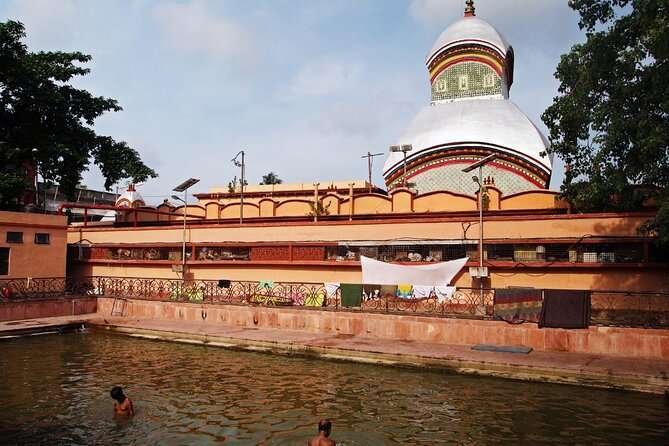
Kalighat Temple is one of the most visited Goddess Kali’s temple in India. Devotees of Goddess Kali from all over India come to Kalighat temple during “Kali puja” during Diwali festival, on the moon day of Hindu month “Ashwin”. The whole city keeps bustling during the “Puja” rituals. It is said that the name Calcutta is identified from Kalighat.
The Origins and Evolution of Kalighat Paintings in Bengal
Who is the goddess Kali in Hinduism?
Goddess Kali is seen as an incredibly famous goddess of the Hindu religion. She is said to be a rescuer and also destroyer. Goddess Kali is adored by many individuals who visit from far away places in India and the world. The icon incorporates three significant eyes, four hands and a long projecting tongue.
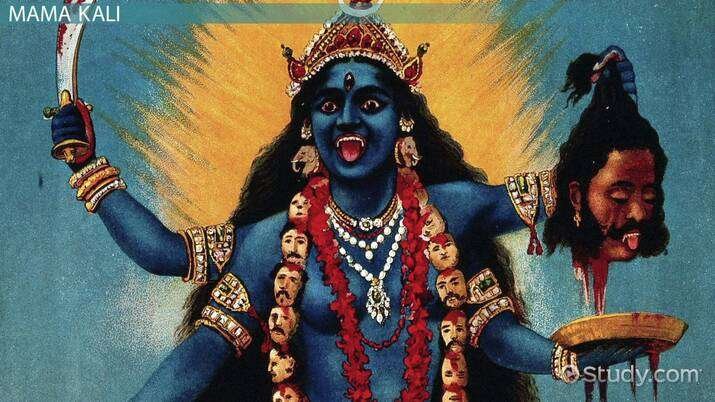
One hand of the Goddess holds the top of Satan ruler “Shumbha”. The other hand holds a scimitar that connotes that the human self image ought to be killed by it’s own “Karma”. That is the means by which one can accomplish “Moksha”.
What is the mystery of Kalighat Kali Temple?
Sacred Idol of Kali: The idol at Kalighat has a softer and compassionate look which is unique to this temple which is unlike traditional depictions of Kali with a fierce expression. It is made of black stone with golden arms and a long, extended tongue which symbolizes divine energy. Some say this form of Kali appears to protect her devotees.
Divine Design: The idol of Kali here has no known historical artist or designer. It is covered in mysterious legends suggesting it was divinely created. The long tongue and unique iconography of the deity are considered mysterious by art historians. People believe that the idol itself possesses spiritual powers which embodies Kali’s energy. It is also said that her presence here is more strongly than other depictions of her.
Tantric Spirituality: Kalighat is believed to be a place where secret Tantric practices were historically performed to invoke Goddess Kali’s power. Temple’s history is largely hidden, and few records exist. There are whispers about Tantric rites performed by powerful devotees in secluded parts of the temple to seek divine intervention. Some say that the energies created by these rites have left a lasting and mystical aura around the temple.
Underground Channel: Adi Ganga (Old Ganges) river is said to be connected by a channel to the temple. It is believed to bring sacred waters directly to the temple. This channel is largely unseen by the public, and its origin is covered in mystery. The Adi Ganga was considered a powerful spiritual river. But its direct connection to the Kalighat Kali Temple adds an element of mystery. Devotees believe that Kali herself blesses the river and it creates a source of divine energy that flows into the temple.
Goddess Kali’s presence: Many devotees and priests have reported sensing Kali’s presence during festivals. This phenomenon is rare, however, it gives the sense that Kali herself resides in this temple and is watching over her devotees.
Symbolism and Satire: Understanding the Essence of Kalighat Paintings
Kalighat paintings are known for their unique motifs that depict religious, social, and cultural themes. It reflects the 19th-century Bengal. Here’s a closer look at the primary motifs that define this unique art form:
What are the 7 motifs?
- Religious and Mythological Figures
- Hindu gods and goddesses like Kali, Durga, Lakshmi, and Krishna, are main motifs in Kalighat paintings. These figures are depicted with dramatic expressions and bold outlines. It symbolizes divine power.
- Scenes from the epics like Ramayana and Mahabharata such as Sita’s abduction by Ravana, Krishna’s playful encounters with the “gopis” are portrayed.
- Social and Political Satire
- British officials, missionaries, and Anglo-Indians were depicted to mock the impact of colonialism. These motifs reflected criticisms of British influence. It subtly mocks the colonial society and its effects on Indian culture.
- Artists also included mocking depictions of moral issues, such as the hypocrisy of society, questionable religious practices, and the conflicts arising from changing gender roles.
- Everyday Life and Domestic Scenes
- Intimate scenes of Bengali family life, married couples, are common motifs. These images portrayed everyday emotions and social dynamics which shows women engaging in household chores.
- Traditional occupations like fish vendors, musicians, and local traders, were represented to highlight the everyday lives of people. These scenes portrayed the bustling life of Kolkata.
- Animals and Nature
- Parrots, cats, horses, and elephants were popular in Kalighat paintings. Cats depicted a fish in their mouths which were used in satire to represent the Bengali hypocrite, who, like the cat, pretended to be holy but indulged in forbidden behavior.
- Kalighat artists included flora and fauna symbolizing beauty and spirituality (eg: lotus is a symbol of purity). These natural elements provided a background that balanced the scenes with aesthetic elegance.
- Tantric and Symbolic Imagery
- Oversized, expressive eyes and elaborate hands are used in Kalighat paintings as it conveys emotion and drama. This exaggerated detailing gave figures a sense of life and intensity.
- Colorful and Simplistic Aesthetic
- Thick, dark outlines and bright colors used in these motifs brought simplicity and clarity to the images. These colors made them eye-catching and direct. Artists used natural pigments as it emphasizes earth tones like red, yellow, and black, with occasional blues and greens.
- Expressive Facial Features and Gestures
- Exaggerated eyes, prominent hands, and dramatic expressions are hallmarks of Kalighat paintings. These features convey strong emotions and add vibrancy to the art. It makes figures appear animated and alive.
What techniques were used in Kalighat painting?
- Brushwork: The artists used large, flat brushes to create the thick outlines. They used rapid and fluid strokes that define the subjects.
- Bold Outline and Minimal Detailing: The artists used thick black outlines which creates a contrast against the background colors. The details are minimal and simplified. They focus on the form and emotion of the subject.
- Bright Colors: Kalighat painters used flat and vibrant colors. They also used minimal shading. The use of bright reds, yellows, and greens are common. The colors were applied in layers to give a uniform look.
- Simplified and Stylized Figures: The figures in designed with exaggerated facial features and a simple representation of the body. There is an emphasis on the expression and posture rather than realism.
- Tempera Technique: The colors are water-based and applied in a tempera technique. This involved mixing pigments with a water-soluble binder like an egg yolk which is used to achieve a matte finish.
- Use of Paper or Cloth: Early Kalighat paintings were created on cloth and the recent works were painted on paper. The surface of the paper or cloth was pre-treated with a thin coating of chalk powder to create a smooth surface for painting.
- Religious and Secular Themes: Kalighat paintings were initially religious which depicted Hindu stories. The recent works included secular subjects such as contemporary social issues, political satire.
Conclusion: The Timeless Appeal of Bengal’s Kalighat Paintings
Kalighat paintings stand as a testament to the rich cultural history of Bengal. It offers a unique glimpse into the evolving social, political, and religious landscape of 19th-century India. Their unique combination of bold symbolism and sharp satire has ensured their place in both historical and artistic significance.
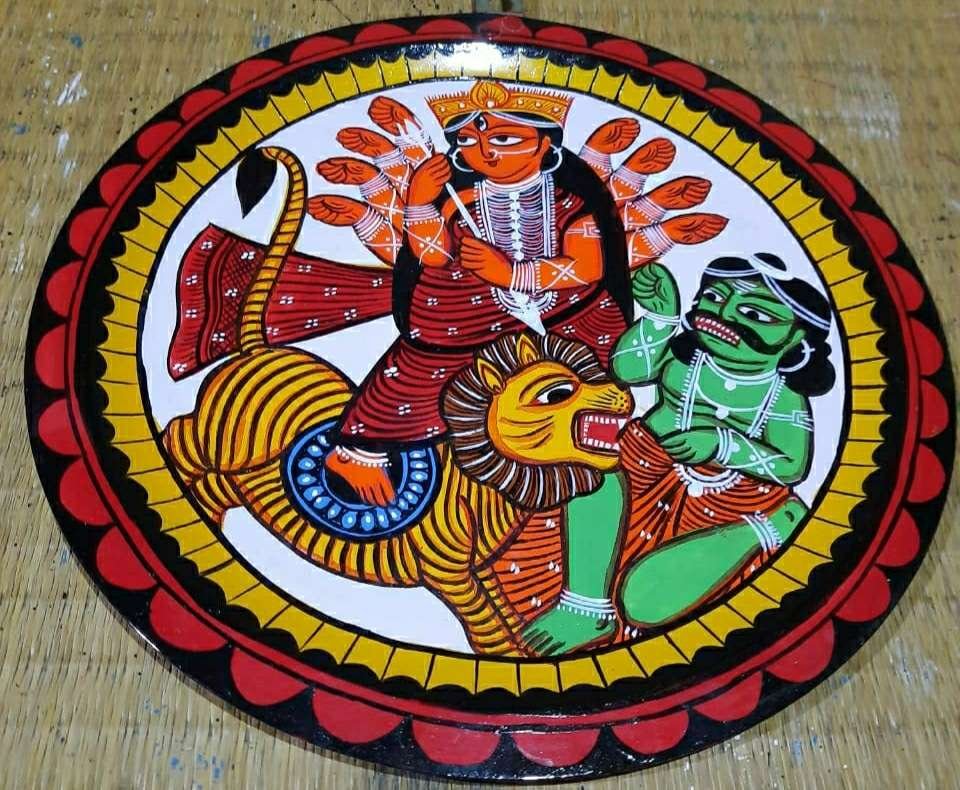
Kalighat paintings at their peak were more than just vivid imagery. They are a powerful means of storytelling that depicts the complexities of it’s time. The representation of gods and goddess convey a deeper understanding of spiritual power. The use of color and motifs helps to resonate with both contemporary and modern audiences.
Why Kalighat painting came to an end?
Several factors contributed to its decline. During the British colonial period, Western art techniques and styles began to dominate. The introduction of European painting styles like oil painting and portrait is one of the reason. These styles became more desirable among the educated and elite which overshadowed indigenous art forms like Kalighat painting.
The craze of photography in the 19th century also played a role in diminishing the need for painted portraits. Kalighat paintings featured local scenes and figures which were gradually replaced by the realism of photography.
Kalighat paintings initially thrived because of their association with the Kalighat temple in Kolkata. Pilgrims visiting the temple would purchase these paintings as religious souvenirs. However, as the nature of pilgrimage changed and people began to travel to other temples so the demand for temple related artwork declined.
For more insights into Kalighat and related topics, explore these resources:
Checkout our Blog Page on the Traditional Indian art.

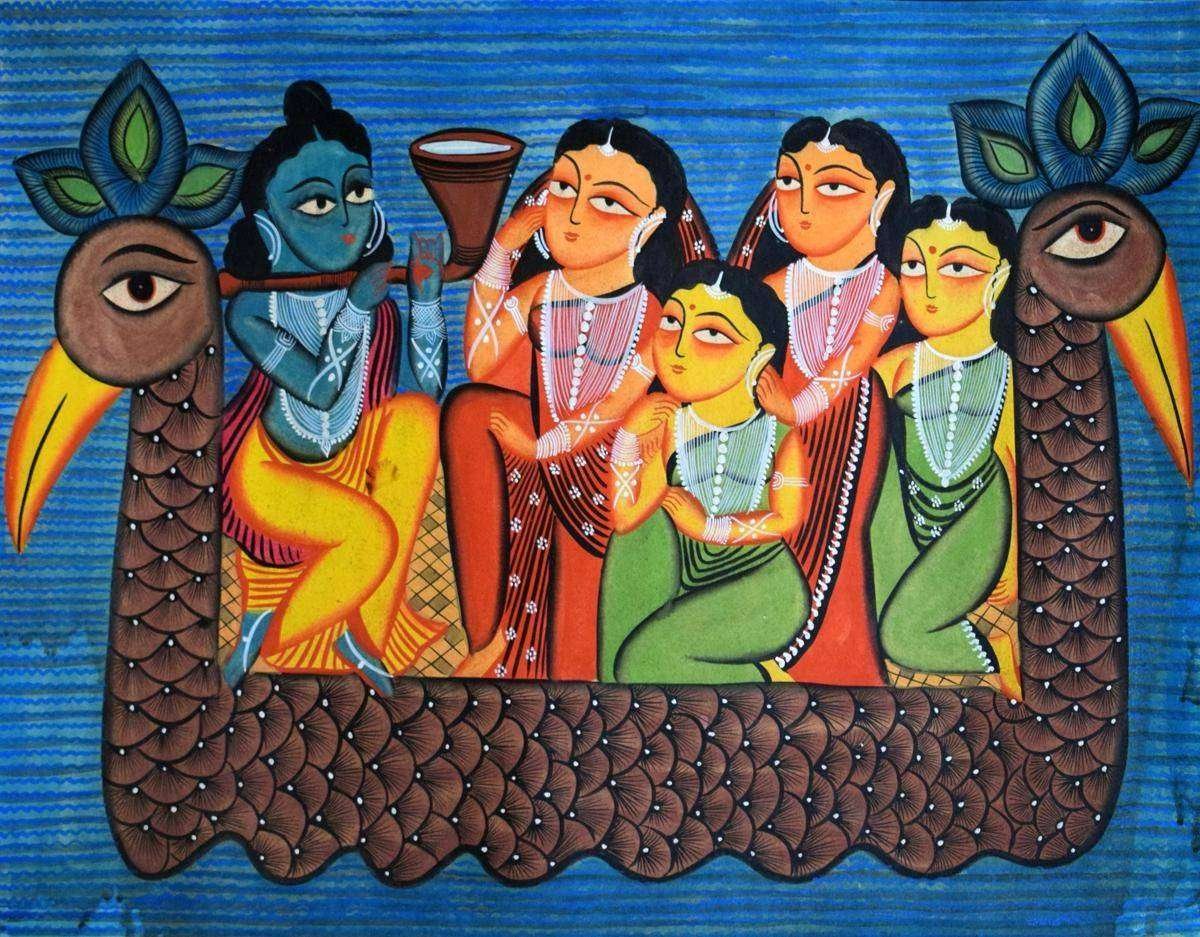

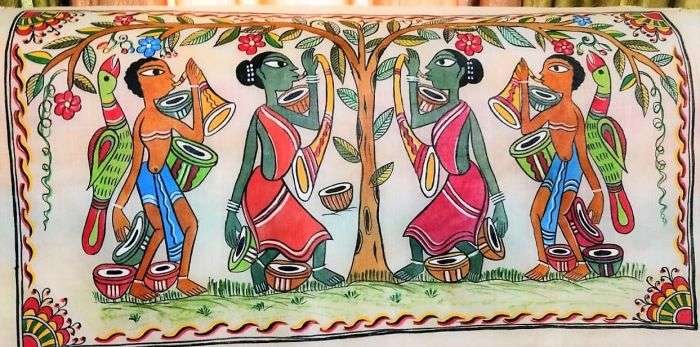
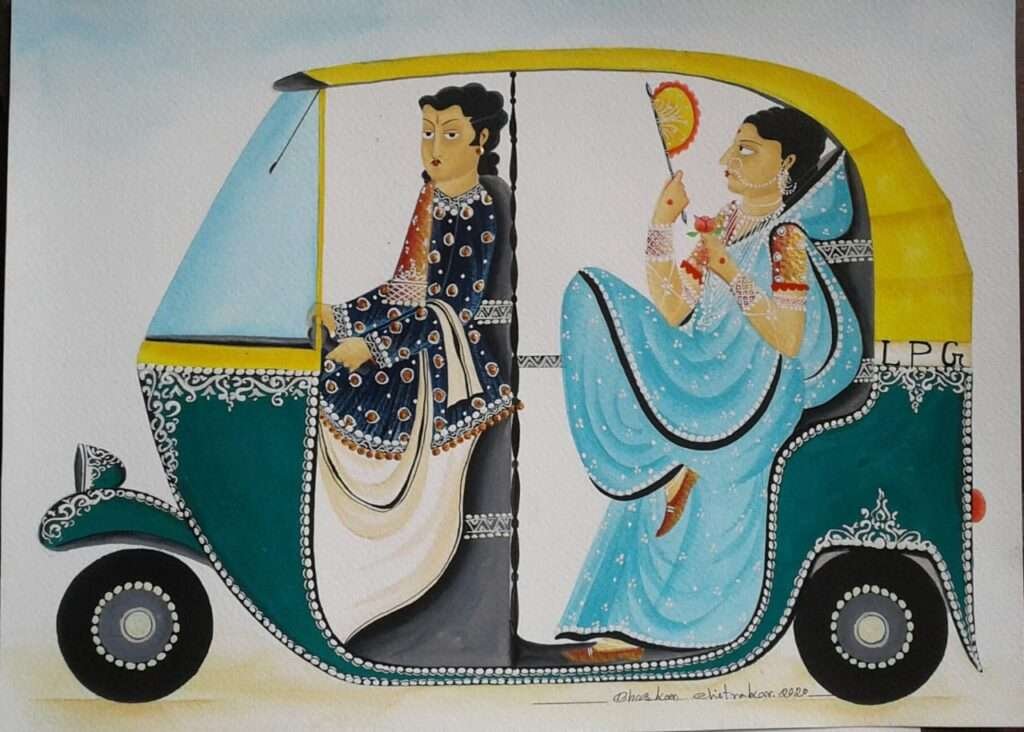
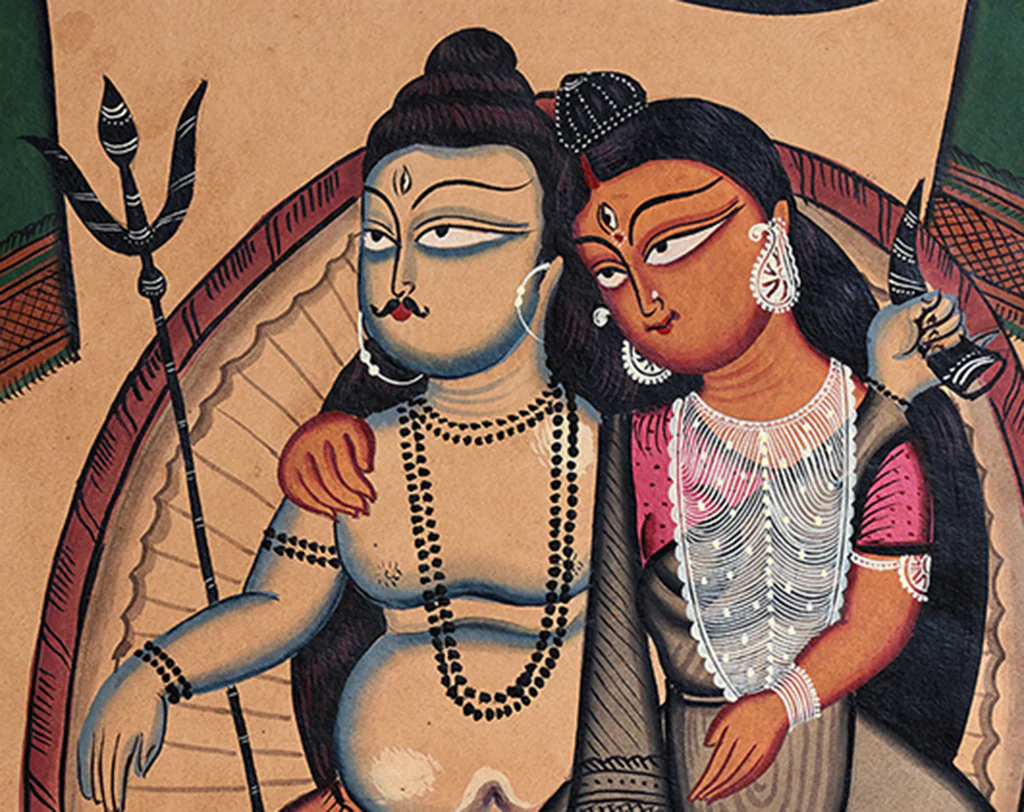
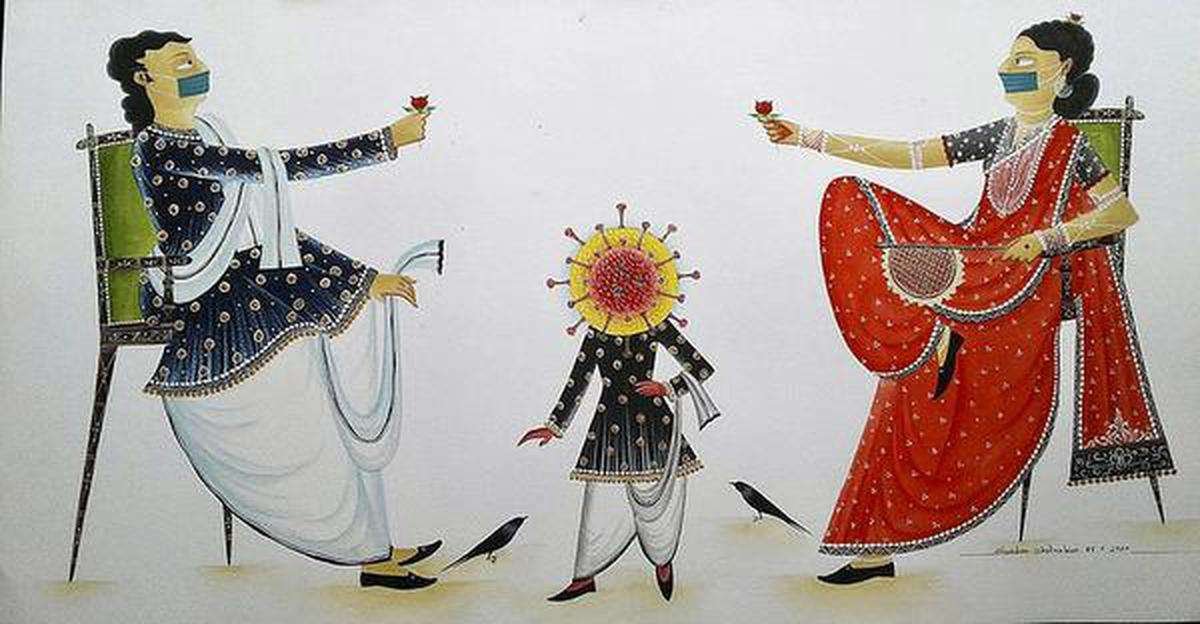
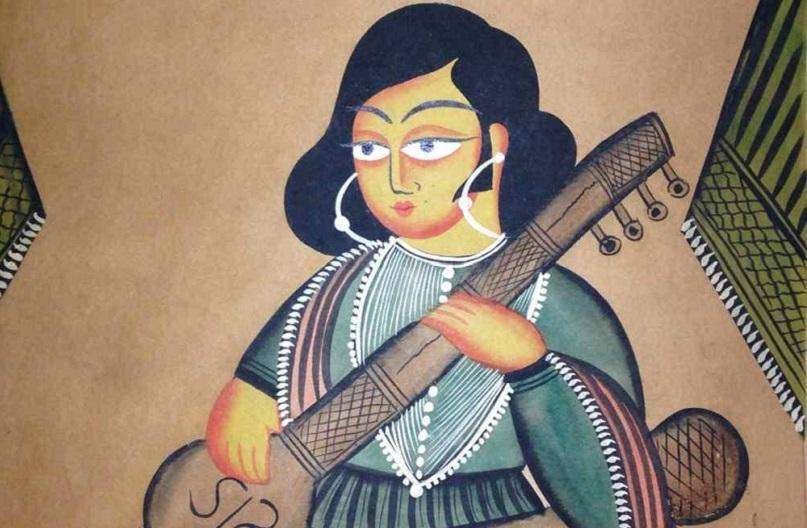
Leave a Reply